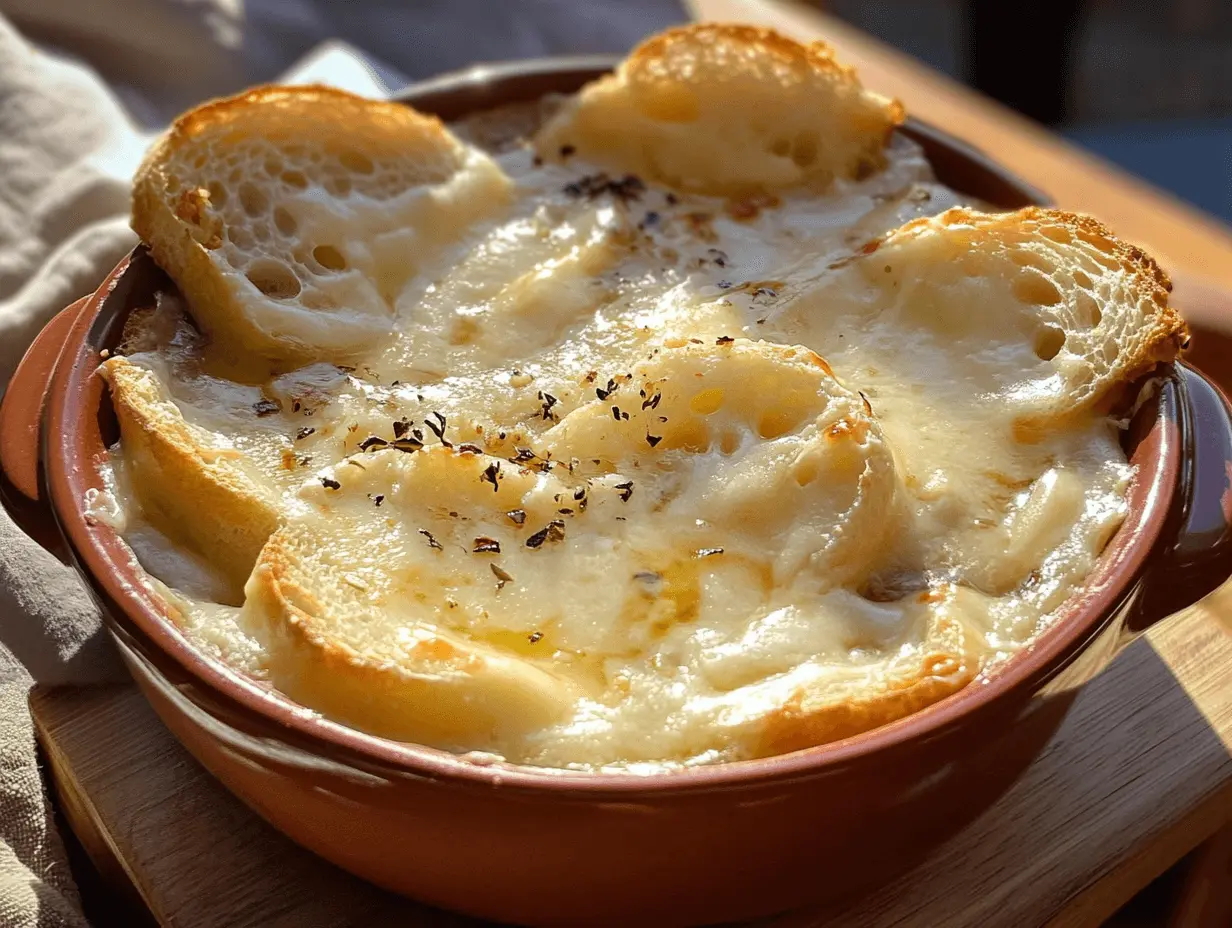Imagine taking a bite of a dish that perfectly comes together. Each part works in harmony, creating a moment you’ll never forget. Gruyere cheese adds a warm, rich flavor to that moment. It’s a cheese with a deep, nutty taste that brings back memories and sparks creativity in the kitchen.
Whether it’s a cozy fondue night with friends or a fancy dinner, Gruyere cheese is more than just an ingredient. It’s a celebration of taste and tradition. In this guide, we’ll explore the world of Gruyere cheese. We’ll look at its unique qualities, how to use it in cooking, and more.
Key Takeaways
- Gruyere cheese is known for its rich, nutty flavors that enhance various dishes.
- It comes from Switzerland and is a staple in many culinary traditions.
- Finding authentic Gruyere cheese is key to experiencing its true taste.
- This cheese pairs well with a variety of ingredients and wines.
- Gruyere is versatile and can be used in both simple and gourmet recipes.
Introduction to Gruyere Cheese
Gruyere cheese has deep roots in Swiss history. It comes from the town of Gruyères in the Fribourg region. This cheese has been made for over 800 years.
It’s known for its nutty flavor and smooth texture. Gruyere is a key ingredient in many dishes, like Swiss fondue and pastries. Chefs and home cooks love it for its melting qualities and rich taste.
Knowing where Gruyere cheese comes from makes us appreciate it more. The traditional way it’s made shows its rich history and skill. Gruyere’s unique taste and history make it a favorite among cheese fans everywhere.
The Distinct Characteristics of Gruyere Cheese
The taste of gruyere cheese is rich and complex. As you enjoy it, the flavors evolve, showing its many sides. We’ll explore the gruyere cheese flavor profile and its texture and appearance.
Flavor Profile

The flavor starts sweet, then gets nuttier as it ages. Young gruyere is creamy, while older gruyere is earthy with spice and caramel notes. This makes gruyere a great choice for many dishes.
Texture and Appearance
Gruyere’s texture is firm and smooth, getting crumblier with age. Its rind is brown and waxy, contrasting with the creamy, pale yellow inside. This mix of textures makes gruyere perfect for melting and pairing.
| Characteristic | Young Gruyere | Aged Gruyere |
|---|---|---|
| Flavor | Sweeter, creamier | Nutty, earthy, hints of spice |
| Texture | Firm, smooth | Crumbly, more complex |
| Appearance | Pale yellow, soft | Darker yellow, firmer |
Where to Buy Gruyere Cheese
Looking for Gruyere cheese? You have several options. Specialty cheese shops are great for authentic Swiss Gruyere. Grocery stores offer popular brands for easy access.
When looking for where to buy gruyere cheese, check both online and in stores. Online, you can find a wide range, including aged and flavored Gruyere. Brands like Emmi and Swiss Market are often available, promising quality.
Buying gruyere cheese online is great if you can’t find it locally. With a few clicks, you can explore many options. Look for reputable online stores known for their cheese selection.
| Store Type | Examples | Notes |
|---|---|---|
| Specialty Cheese Shops | Murray’s Cheese, Cowgirl Creamery | Often carry unique and imported cheeses. |
| Grocery Stores | Kroger, Whole Foods | Typically offers popular brands. |
| Online Retailers | Amazon, iGourmet | Wider selection and convenience. |
Exploring these options helps you find the best Gruyere. You can compare prices, flavors, and types. Both local and online shopping can improve your cooking with this delicious cheese.
Best Gruyere Cheese Brands to Explore
Choosing the right gruyere cheese brand can really enhance your taste experience. Many people look for brands that stick to traditional methods and offer authentic flavors. Here are some top picks known for their quality.
Top Recommendations
- Emmi Gruyere – This brand offers authentic Swiss varieties, renowned for their rich flavors and creamy textures.
- D.O.P. Gruyere – Known for its high-quality standards, this brand guarantees a product that meets strict authenticity criteria.
- His Majesty’s Gruyere – Aged to perfection, this brand delivers a complex flavor profile that cheese lovers appreciate.
- Jarlsberg – This brand offers a mild taste that pairs well with various dishes, resembling gruyere.
- Swiss Knight Gruyere – A solid choice that reflects traditional cheese-making techniques, providing a balance of nutty and sweet flavors.
- Le Gruyere AOP – This brand is celebrated for its authenticity and is one of the most popular recommendations for quality gruyere cheese.
What to Look For
When choosing high-quality gruyere cheese, consider a few key factors. Here are some tips to help you:
- Check the aging date; older cheese tends to have a more pronounced flavor.
- Opt for cheese with a natural rind, as it typically indicates a more authentic product.
- Look for brands marked with a D.O.P. label, ensuring the cheese meets top quality standards.
- Consider the flavor profile, which varies based on the aging process and method of production.
Uses of Gruyere Cheese in Cooking
Gruyere cheese is a treasure in the kitchen. It melts beautifully and tastes amazing. It’s perfect for both everyday meals and special events, adding a special flavor to dishes.
Versatile Applications
Cooking with gruyere cheese is fun. Here are some ways to use it:
- Creating rich sauces for pasta or vegetables
- Incorporating into savory crepes or omelets
- Layering in gratins for a delightful crust
- Making creamy soups, like French onion
- Presenting in cheese platters with crackers and fruits
Popular Dishes Featuring Gruyere
Many dishes showcase gruyere cheese’s greatness. Here are some favorites:
- Classic Swiss fondue – A perfect mix of melted gruyere and accompaniments
- Croque monsieur – A delectable French sandwich that brings out the cheese’s richness
- French onion soup – A comforting bowl topped with gooey melted gruyere
- Macaroni and cheese – Elevating this favorite comfort food with depth
- Quiche Lorraine – A savory tart that shows the cheese’s versatility
Recipes for Every Occasion

Discover the delightful world of Gruyere cheese through a variety of recipes. These recipes celebrate its rich flavors. Gruyere cheese is perfect for both classic dishes and creative twists for different occasions. Whether it’s a cozy evening or a festive gathering, these recipes will impress your guests and elevate your dining experience.
Gruyere Cheese Fondue Recipe
Learning how to make fondue is a cherished tradition, with Gruyere cheese as the star. The classic gruyere cheese fondue recipe combines simple ingredients for a creamy, decadent treat. Here’s how you can prepare it:
- Ingredients:
- 8 oz Gruyere cheese, grated
- 8 oz Emmental cheese, grated
- 1 clove garlic, halved
- 1 cup dry white wine
- 2 teaspoons cornstarch
- 1 tablespoon lemon juice
- Freshly ground pepper
- Bread, cubed (for dipping)
- Instructions:
- Rub the inside of a fondue pot with the garlic.
- Pour in the wine and heat until simmering.
- Gradually add the cheeses, stirring until melted and smooth.
- Mix the cornstarch with lemon juice and add to the mixture; stir well.
- Season with pepper and enjoy with bread cubes!
Other Creative Gruyere Recipes
Use Gruyere cheese in various comforting dishes that are sure to satisfy. Here are some creative Gruyere cheese recipes to try:
- Gruyere Mac and Cheese: A comforting dish perfect for family gatherings.
- Gruyere Potato Gratin: Thinly sliced potatoes baked with a creamy Gruyere layer.
- Gruyere-Stuffed Mushrooms: Savory mushrooms filled with a rich Gruyere mixture.
| Recipe | Main Ingredient | Cooking Time |
|---|---|---|
| Gruyere Mac and Cheese | Gruyere cheese | 30 minutes |
| Gruyere Potato Gratin | Potatoes | 45 minutes |
| Gruyere-Stuffed Mushrooms | Mushrooms | 25 minutes |
These dishes highlight the versatility of Gruyere cheese, making it an essential ingredient for your next meal. Elevate your cooking with these satisfying recipes and explore the flavors that Gruyere cheese has to offer!
Gruyere Cheese Nutrition: What You Need to Know
Gruyere cheese is not just tasty but also packed with nutrients. It’s a great source of protein, which is good for building muscle. This makes it a favorite among those who want to stay fit.
This cheese is also full of calcium, which is key for strong bones. It has healthy fats that boost overall health. Plus, it has less lactose than many cheeses, making it easier to digest for some people.
| Nutrient | Amount per 100g | Daily Value Percentage (%) |
|---|---|---|
| Calories | 413 | 20% |
| Protein | 29g | 58% |
| Fat | 32g | 49% |
| Carbohydrates | 0g | 0% |
| Calcium | 1000mg | 100% |
Adding gruyere cheese to your meals can be very beneficial. It makes food taste better and gives you important nutrients. Its ability to be used in many dishes makes it a popular choice for both special occasions and everyday meals.
Gruyere Cheese vs Swiss: Understanding the Differences
Exploring cheese, it’s key to know the differences between gruyere and swiss. Both come from Switzerland but taste, texture, and uses are different.
Gruyere cheese has a robust and complex flavor, often described as nutty with sweetness. Its firm texture is perfect for melting, making dishes like fondue and French onion soup better. Swiss cheese, on the other hand, has a milder flavor and is known for its holes. It’s great in sandwiches and on cheese boards.
To better understand these differences, look at the table below:
| Feature | Gruyere Cheese | Swiss Cheese |
|---|---|---|
| Origin | Switzerland | Switzerland |
| Flavor Profile | Robust, nutty, slightly sweet | Mild, creamy |
| Texture | Firm, smooth | Soft, has characteristic holes |
| Best Uses | Fondue, gratins, savory pastries | Sandwiches, cheese platters |
| Age | Typically aged 5-12 months | Usually aged 2-3 months |
In summary, knowing the differences between gruyere and swiss cheese is important. Choosing the right cheese can make a dish better. Whether it’s the rich taste of gruyere or the creamy swiss, it’s all about the right choice.
Finding a Gruyere Cheese Substitute
Having a gruyere cheese substitute in your kitchen can be a game-changer. Emmental cheese is a great choice because it tastes nutty and has a smooth texture. It melts well, making it perfect for creamy dishes.
Jarlsberg is another excellent option. It has a mild, sweet flavor that’s similar to gruyere. It’s great for fondues and fancy grilled cheese sandwiches.
If you’re looking for something a bit different, try aged cheddar. It has a sharp taste but works well with many ingredients. It can add a nice touch to your dishes when used right.
Here’s a quick overview of some popular alternatives to gruyere cheese:
| Substitute | Flavor Profile | Best Uses |
|---|---|---|
| Emmental Cheese | Nutty, mild | Melting, salads, sandwiches |
| Jarlsberg | Mild, slightly sweet | Fondue, baked dishes, pair with fruits |
| Aged Cheddar | Sharp, tangy | Grilled cheese, sauces, mac and cheese |
Authentic Gruyere Cheese: What Makes It Special
Authentic gruyere cheese comes from the Swiss Alps. It has a unique flavor that stands out. This flavor comes from its special making process.
Quality is key with authentic gruyere. It has a D.O.P. label, showing it’s made in Switzerland. The milk comes from cows that eat grass in the Alps.
The cheese ages for five months to over a year. This aging makes it taste even better. It’s aged in special cellars that add to its flavor.
In short, authentic gruyere is more than cheese. It’s a piece of history and quality. Knowing about authentic gruyere opens up a world of taste and tradition.
| Characteristic | Details |
|---|---|
| Origin | Switzerland |
| D.O.P. Certification | Denominazione di Origine Protetta |
| Flavor Profile | Nuttiness with a hint of sweetness |
| Aging Duration | 5 months to over 1 year |
| Production Method | Traditional and regulated |
| Milk Source | Cows grazing on Swiss pastures |
FAQs
What is Gruyère Cheese Similar To?
Gruyère cheese is similar to other semi-hard, alpine-style cheeses with nutty and creamy flavors. Common substitutes include:
- Emmental: Both cheeses share a slightly sweet and nutty flavor, with Emmental being milder.
- Comté: Often called the French cousin of Gruyère, Comté has a similar texture and taste profile but can be slightly fruitier.
- Jarlsberg: A Norwegian cheese with a similar mild, nutty flavor but a slightly creamier texture.
- Beaufort: Another French alpine cheese that is close in texture and taste but has a more intense flavor.
- Fontina: Known for its nutty and earthy tones, Fontina can replace Gruyère in recipes like fondue or gratins.
What is so Special About Gruyère Cheese?
Gruyère cheese stands out for several reasons:
- Flavor Complexity: Gruyère is renowned for its nutty, slightly sweet, and creamy flavor that deepens as it ages. Younger Gruyère has a creamier texture, while aged Gruyère develops more robust and earthy tones.
- Versatility: It melts beautifully, making it ideal for fondue, gratins, and soups. It’s equally delicious on cheeseboards or grated over dishes.
- Artisan Production: Authentic Gruyère is made in Switzerland using traditional methods and is protected by a PDO (Protected Designation of Origin) label, ensuring high quality and authentic production.
- Texture: Its semi-hard texture allows it to be used in a wide range of culinary applications, from slicing to grating.
How Do You Pronounce Gruyère Cheese?
Gruyère is pronounced as “groo-YAIR” in English. The “r” at the end is soft, and the emphasis is on the second syllable. The pronunciation might be slightly more nasal in French or Swiss contexts, reflecting the regional accent.
Are Swiss Cheese and Gruyère the Same?
No, Swiss cheese and Gruyère are not the same, though they share similarities:
- Swiss Cheese: This is a general term often used in the U.S. to refer to cheeses like Emmental, known for its characteristic holes. Swiss cheese tends to be milder and less complex in flavor than Gruyère.
- Gruyère: A specific type of Swiss cheese, Gruyère has a protected designation and is more flavorful, with nutty, creamy, and slightly sweet notes.
Conclusion
Exploring recipe reveals a timeless delicacy that adds richness to many dishes. Its unique flavor and creamy texture make it a joy for cheese enthusiasts and chefs. As you explore gruyere, you’ll see its versatility and how it can improve your favorite recipes.
This cheese is not just a taste delight but also offers health benefits. It’s perfect for a gourmet fondue, a cozy casserole, or a fresh salad. Its adaptability makes it a must-have in every kitchen.

